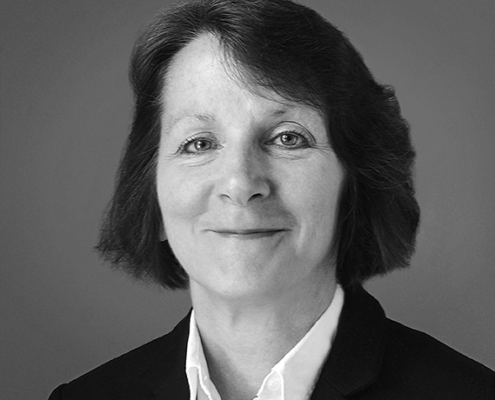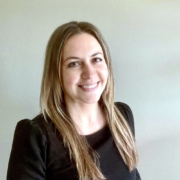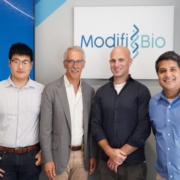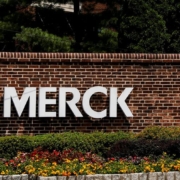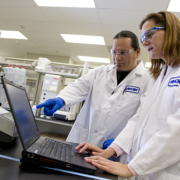Taking oncology therapies to market requires change in commercialization models
Taking oncology therapies to market requires change in commercialization models
By Maria Fontanazza • [email protected]
As the healthcare journey for patients living with cancer has changed, so has the way in which pharmaceutical companies bring a drug to market. Med Ad News spoke with Anne Marie Robertson, SVP, strategy & marketing, EVERSANA about how companies need to rethink traditional commercialization models in oncology to be agile in today’s market.
Med Ad News: When considering the traditional commercialization models in the oncology space, what has changed, and how do pharma companies need to adjust?
Anne Marie Robertson: The biggest thing that has changed in oncology is the pure number of FDA approvals, with nearly 30% of their new drug approvals in the oncology/hematology space. What’s really impactful for the pharmaceutical manufacturers is that the FDA is becoming much more stringent on confirmatory trials. You’ve seen a lot of different companies – both big and small – work with the FDA this year to actually change their approval process because of confirmatory trials. This makes it complicated. This is why the commercialization model has to be different. You have to be nimble and agile; you have to be able to change your launch plan depending on your interaction with the FDA. It also depends on what kind of tumor you’re working with, and what kind of cancer your patients have. It totally changes the trajectory. Some tumors are chronic now. [For example], you think about cancer, and we have memories of cancer patients who passed away incredibly rapidly. The pharmaceutical industry has changed that. Now you have cancer patients who are living with their disease within their normal life span. We’re delivering medication to them for that entire time. So that’s really changed the patient journey.
Med Ad News: What are the biggest challenges in navigating this complex sector of the healthcare ecosystem?
Robertson: You have to think about each launch differently. Now that each patient journey is different, each launch must be thought about differently. How long are the patients going to live? What’s their affordability situation? How do you get them medication? It used to be pretty simple: we had a third-party logistics unit that would send a drug to the hospital, and the patient would go the hospital to get their drug. Now it’s totally different. You have patients who are chronically on oral medication; they have a high need for personalized service to make sure they get their medications, to make sure they can afford their medications, and to make sure their medications are at their homes when they need them. You have patients who are doing CAR T-cell infusions — these are curative procedures, but they require you to be away from home for a month, and so how are we going to help the patients and the caregiver access that therapy? There’s just so much more to think about in terms of the patient journey when we’re sitting down to prepare for a launch. That’s why oncology commercialization is becoming more complex, and that’s why you need more advice and experienced providers to work with.
Med Ad News: In looking at the oncology drug commercialization process, how have the roles & responsibilities of the key players changed, and how do they need to work together to help ensure success?
Robertson: Let’s talk about working together first. The biggest change now is that because you want to be agile and nimble, every team has to work together in a really integrated fashion. So, you remember a long time ago we used to do Gantt charts and the first project would finish and the second project would start? If you work that way that now, you’re going way too slow for the healthcare market, especially oncology. Everyone has to work together so the projects are overlapping, and that really drives the need for a seamless integrated team to make sure that you’ve got a consulting project that’s thinking about how you get drugs to the patient. And as soon as that nears the finish and you get the data, you have to start to asking: where are the different sources of the medication for the patient; where is my logistics operation; do I have enough licenses for all my states; what kind of patient services am I going to design to ensure those patients get their medication, etc. So, this the idea of the old-fashioned launch plan where one team started, then passed off work to the next team, etc., is totally out of date. To really make sure that we are accessing health care fast enough for patients and for innovation, it has to be all integrated so that there’s a seamless connectivity between all the different people on the launch team.
Med Ad News: What surprises do teams encounter along the way?
Robertson: The biggest surprises are when you have a change that is unexpected. And changes happen all the time in oncology — it can be on the data side; the actual research that is coming to the patient; you may find that there’s a toxicity that you need to plan for, etc. So, while the drug can really help patients, there may be some sort of downside, and you have to work to come up with that. For example, a lot of oncology medications trigger an allergic reaction when infused into the patient. We have to make sure that the providers are educated on side effect management. We’ve seen a lot more medications now where you have a patient who gets very sick during the period of time that you’re taking care of them. For example, for CAR T cells, those patients are in the hospital for about 30 days just to make sure that the reactions aren’t going to be debilitating at home. That’s a whole different type of planning cycle. So, you really have to be ready to change your launch plan to make sure you take care of whatever you see.
The other thing that comes up all the time is the value story – meaning make sure you understand the value of your medication, and how are payers and insurers from different countries going to see that. And so halfway through your clinical trial you may decide you need to gather some extra data so you can explain that value. There may be pivoting times during your launch where you decide you need something extra done to make the launch a success.
Med Ad News: How has the strategy in working with patients changed?
Robertson: The biggest thing when you think about patients is how much change there’s been in the way we deliver oncology and hematology therapy. When we all started in oncology and hematology, most patients went to the hospital for an infusion. And most patients were doing that once every two or three weeks. It was very simple. The drug was delivered to the hospital, the staff at the hospital was educating the patient. It was a terrible experience for the patient – who wants to be in a hospital every two or three weeks, right? So, you think about whether they liked it: they may have had a great nurse and a great relationship with them, but they still felt really sick because they were going to the hospital all the time. Even if they weren’t physically sick, it was just depressing.
Things have totally changed. You think about renal cancer now, you think about CML [chronic myeloid leukemia] – these are totally treated with oral medications. The patients basically look like any other person who is getting a prescription delivered to their house from a mail order or specialty pharmacy. It’s a much more positive experience. Or you think about all the progress made in immune therapy, and all the progress that’s been made with cell therapy. Those patients may have a much longer life span, and their whole experience may be different. They may be getting one infusion and then they’re cured. The patient journey has really changed. That puts the onus on us to make sure that the patients are getting the services they need. As the healthcare team, as the healthcare provider, we need to make sure that those different patients get different things. For oral drugs – patients may need a lot of financial assistance with those. Not everyone has great oral medication coverage. CAR T-cell patients may need a place to live while they must be close to the hospital for monitoring those AEs [adverse events]. They probably need to bring a caregiver with them. You’re looking for significant support for a very intense period of time for some of these cell and gene therapies. It’s way different than the old [way]: a physician provides an IV to the patient, the patient bills their insurance way different. And the education is way different. If the patient is receiving their medication at home through mail order, they need a way to ask questions. They’re going to need a place to reach out to if they forget something. Some cancer patients don’t remember everything a doctor tells them because it’s pretty stressful time to hear you have cancer, etc. The onus is on us to make sure they have a way to get information – and it all depends on what their specific journey is, when they want it the information.
Med Ad News: What else do companies need to consider during this process?
Robertson: Think about the point of view of the healthcare practitioner. It’s crazy — think about all these launches. If you were the physician or nurse practitioner, you have such an information overload. You’re learning about new launches every day. I think that one thing we need to think about as an industry is how are we going to manage that information overload for our healthcare providers. They’re looking at all types of ways of managing information. That’s really important.
To sum up, I think what we need to talk about is that a fit-to-scale commercial model is really helpful for a manufacturer right now. When we talked about how you need to be integrated, we need to think about how you find one provider who can integrate all those services to make sure that the team is integrated and ensure you don’t have one vendor who is a little bit off schedule when everyone is waiting. So thinking about how we reach out to one person to get what you need. That’s how you get nimble and stay agile and how you make your launch go on time.
The other thing we’re seeing is that the huge sales forces are no longer getting access. You also want to make sure that you work with a provider who can get you a nimble sales team using both science and data to make sure you have information going to the C-suite about affordability, the pathway, what’s important, as well as HCPs need some education. They’re just getting overloaded. You want to make sure you have the footprint to develop that type of team.
| Maria Fontanazza is director of content, PharmaLive and Med Ad News. |

